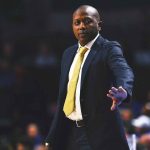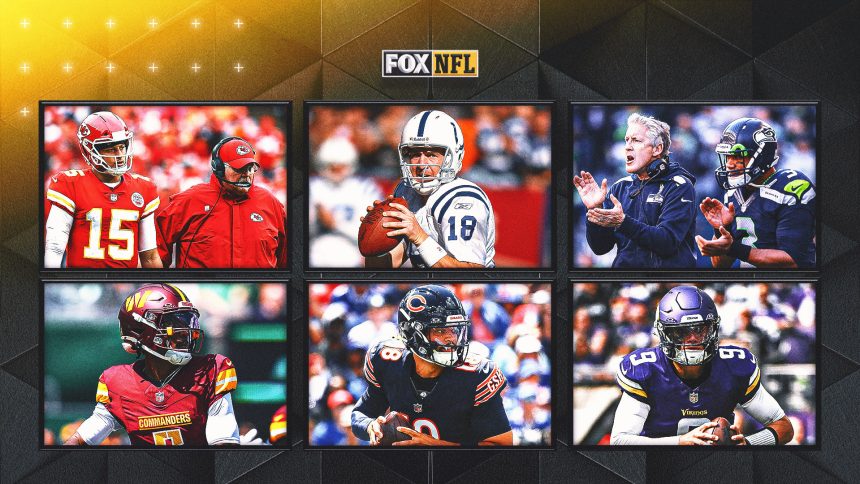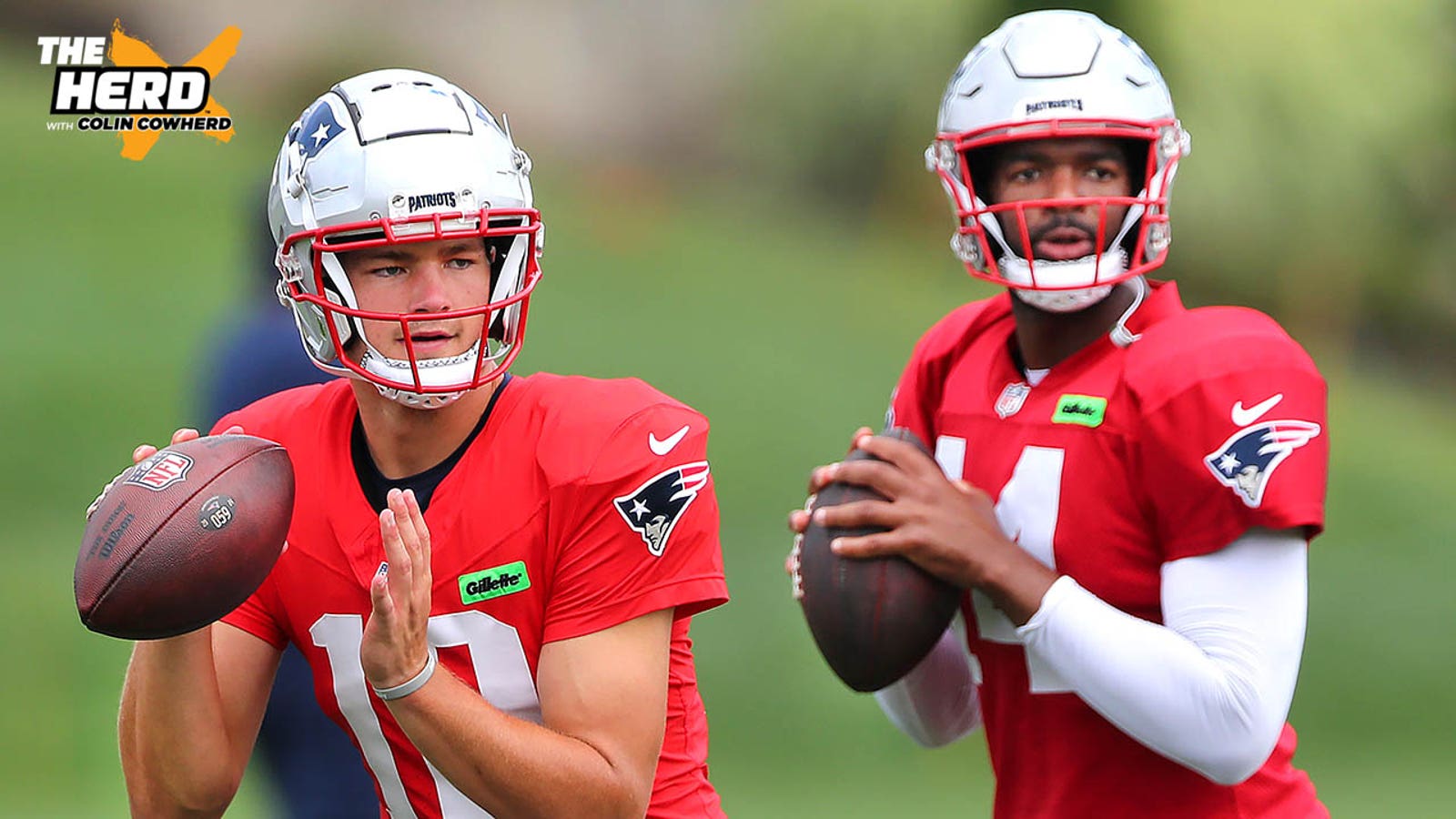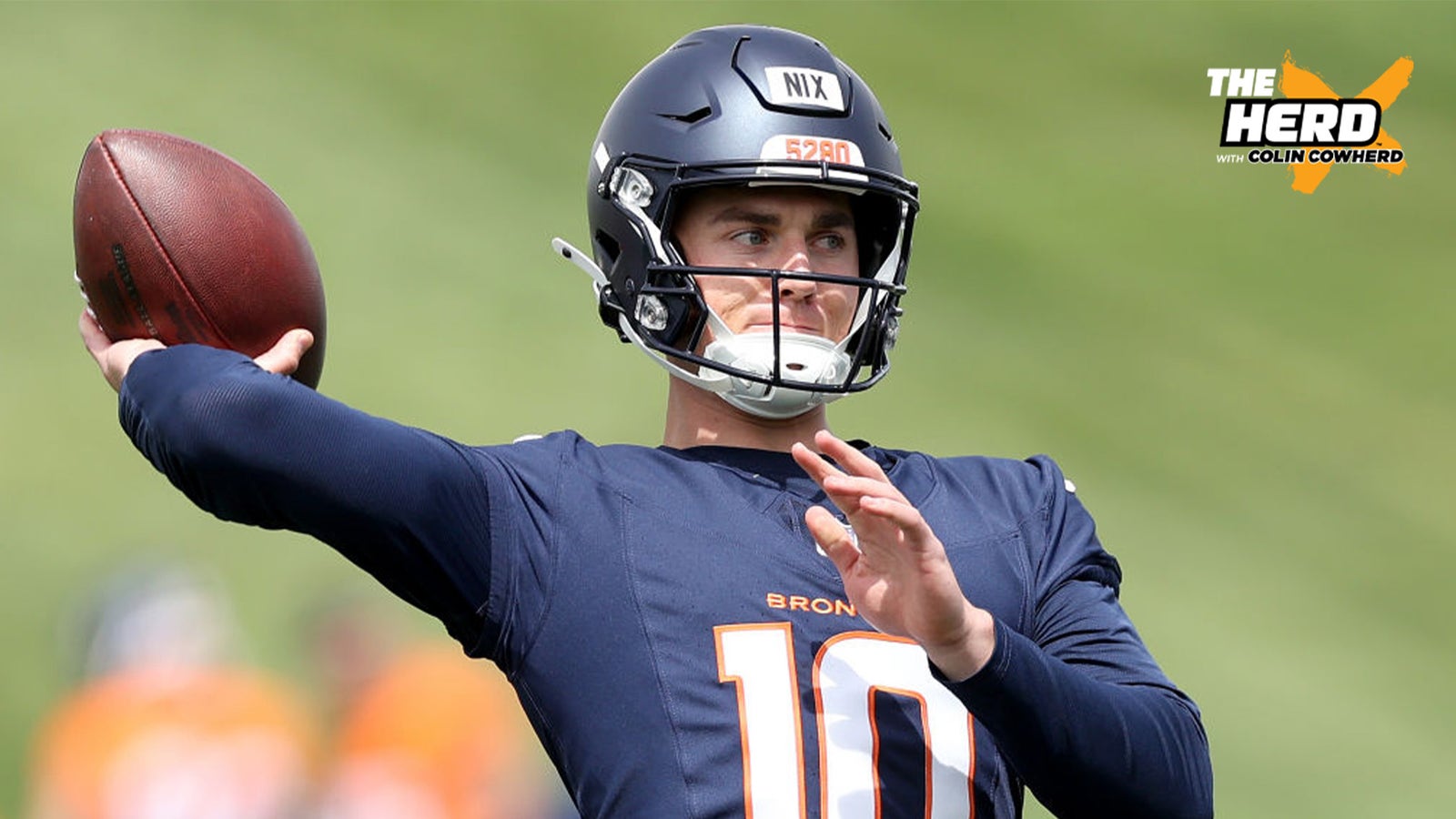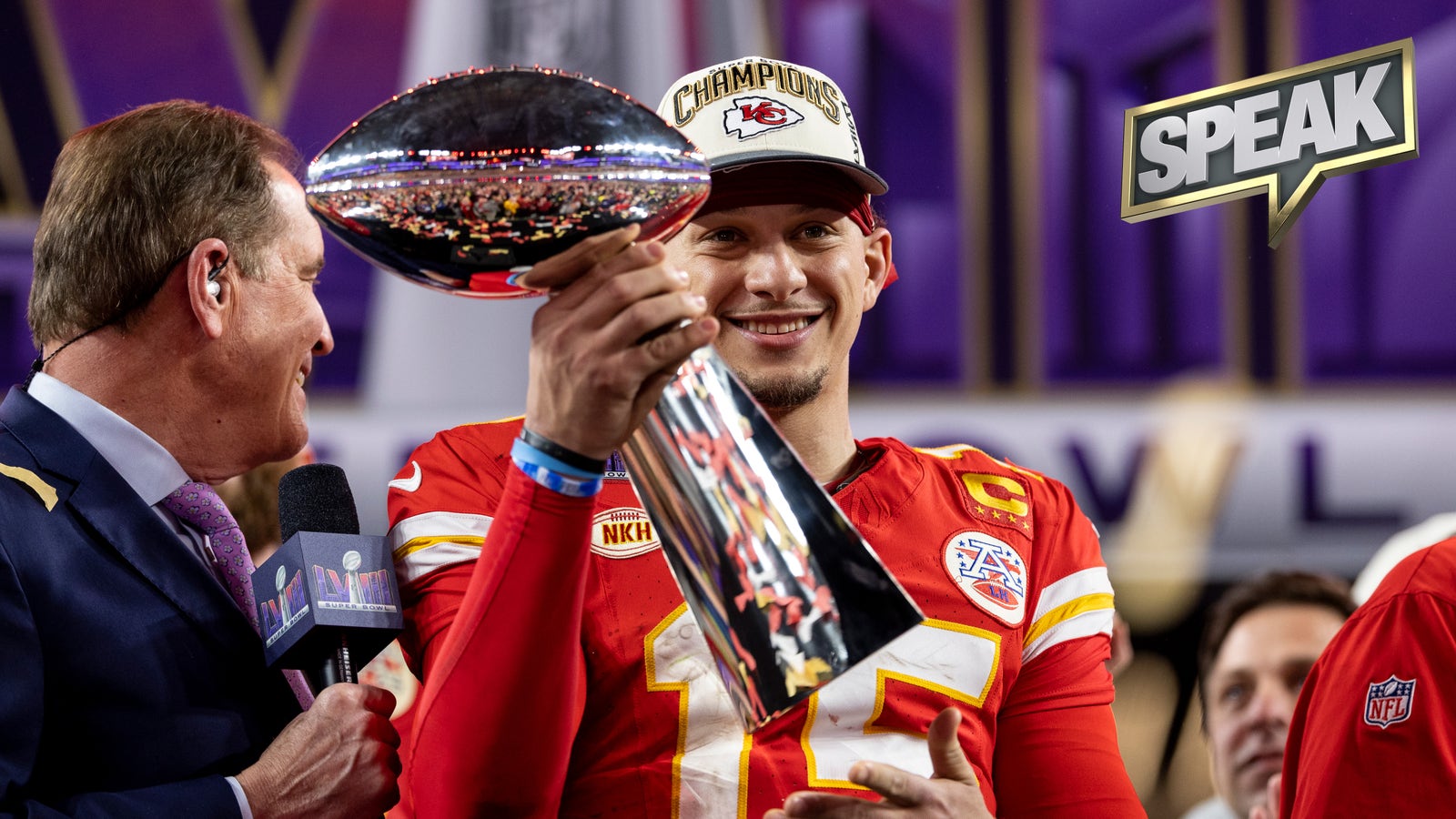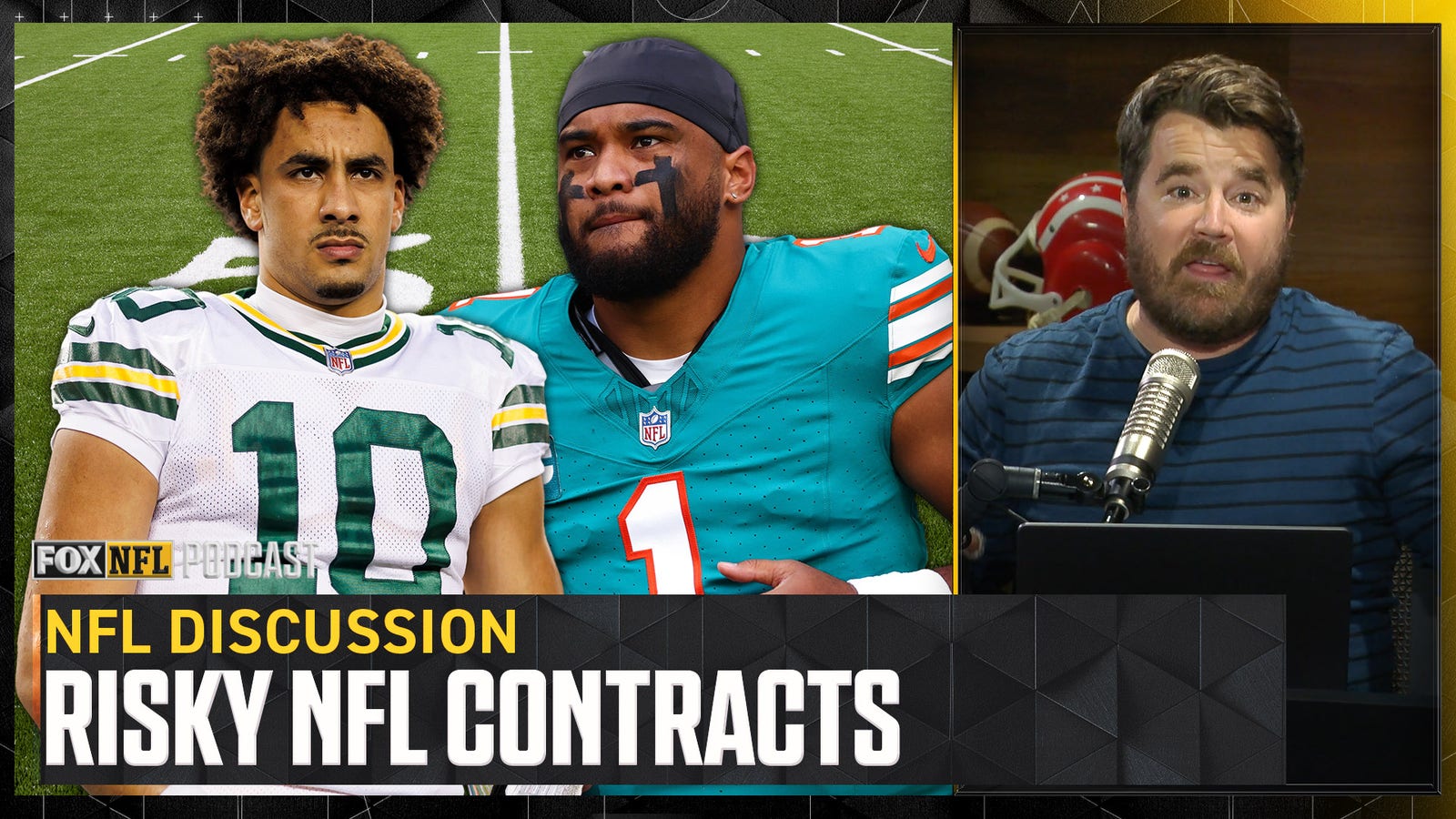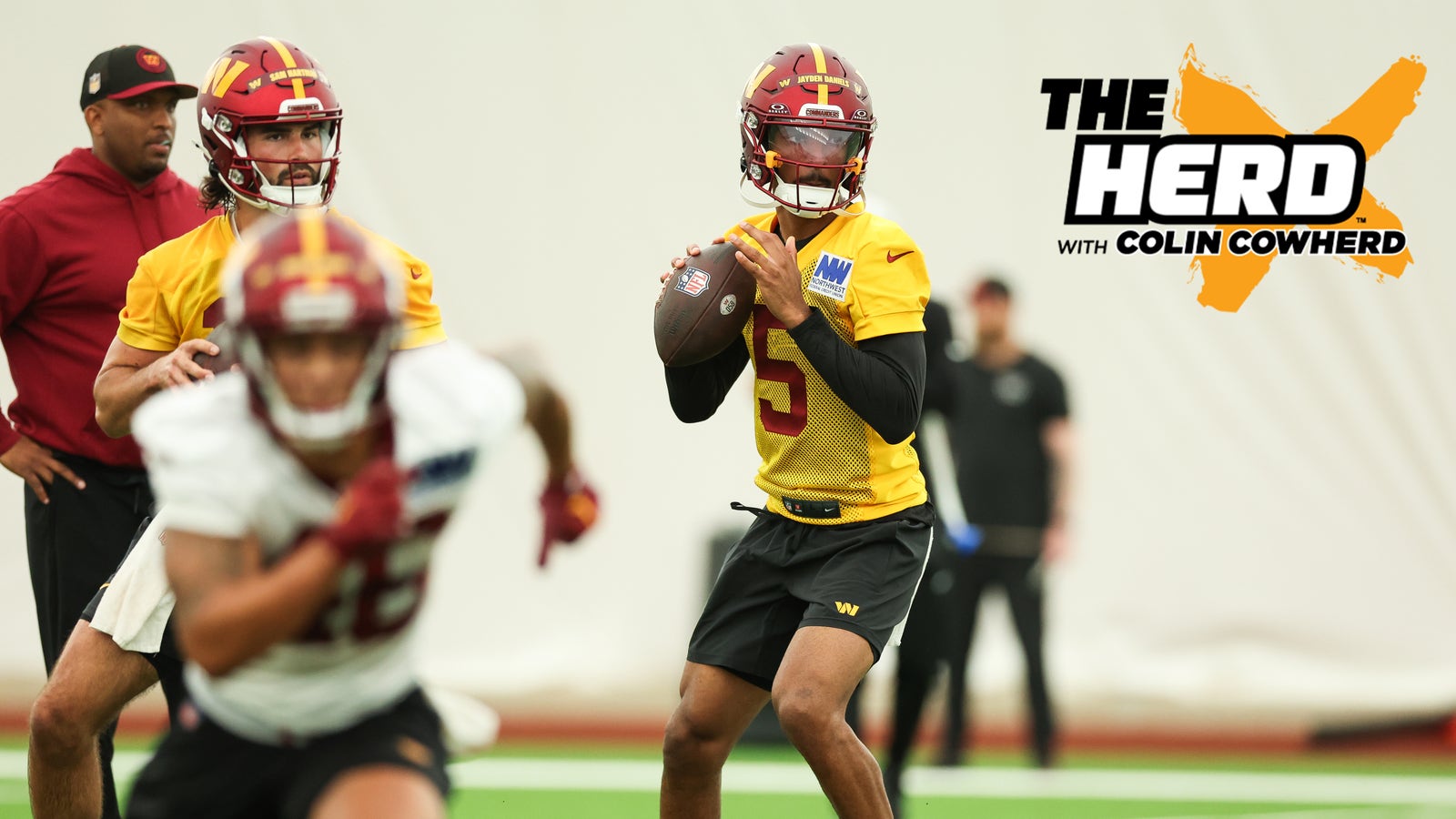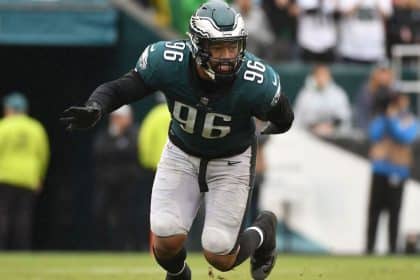Six NFL teams are trying to figure out what to do with their rookie quarterback.
That’s because the 2024 NFL Draft featured a record six quarterbacks selected in the top 12 picks: Caleb Williams, Jayden Daniels, Drake Maye, Michael Penix Jr., J.J. McCarthy and Bo Nix. The next QB didn’t go until the fifth round. Now, the Bears, Commanders, Patriots, Falcons, Vikings and Broncos are wrestling with tough questions.
Is our guy ready to start from Day 1?
What if he’s not ready?
ADVERTISEMENT
Or, worse, what if the guys around him aren’t ready to support him?
Should we keep him off the field? For how long?
The right answers can win Super Bowls. An error gets people fired.
The Bears and Commanders have more or less made their decisions. Their rookies will start. The other four teams are going to spend the next few weeks — and maybe the entire season — deliberating over the right moment to start their rookie.
Take Maye, for example. He has been occasionally sensational in Patriots training camp but has overall been outplayed by journeyman Jacoby Brissett.
To complicate matters, New England’s offensive line has been shoddy and its pass-catchers have had difficulty separating. It’s one thing to ask whether Maye is ready for the top offensive unit. It’s another thing entirely to ask whether that offensive unit is ready for Maye.
[McKenna: Patriots QB Drake Maye’s start to camp matches Bill Belichick’s evaluation]
And that’s just one example of the complications that come from this potentially franchise-altering question: When do you start your rookie quarterback?
We asked coaches and general managers who have lived through it. In conversations with Pete Carroll, Andy Reid, Jim Mora, Mike Tanenbaum and Brian Callahan, NFL decision-makers past and present broke down how to get a franchise’s most important call right.
He’s Our Guy
Peyton Manning’s rookie season might be one of the most-circulated examples of quarterback mythology in the history of the league. Manning, among the most productive quarterbacks in NFL annals, had a rough rookie year. He finished the 1998 season with a 56.7 completion rate for 3,739 yards, 26 touchdowns and 28 interceptions, the most picks ever by a rookie.
But that’s the season just about everyone references when their rookie quarterback has a similarly rough rookie year. Why? Because it absolves the rookie QB: Anything is possible; he can still be Peyton Manning.
So how did it all go down? Well, the Colts decided to start Manning before they’d even officially drafted him. By the time they got the No. 1 overall pick, they had already decided on Manning as their pick — and their QB1.
“The moment we drafted him — or we knew we had him — we decided that he was going to be our starting quarterback,” Mora told FOX Sports. “We didn’t have a very good quarterback. I don’t even remember the name of the guy.”
(For the record, quarterbacks Kelly Holcomb and Doug Nussmeier were also on the Colts’ roster that year.)
What Mora does remember is the first time he saw Manning play quarterback. That’s another chapter to the Manning lore. When Peyton was in high school, his dad, Archie, a New Orleans legend, took him to Saints practices. Mora was the head coach from 1986 to ’96, and at one point, he let Peyton join in team drills.
“He jumped in there and did it,” Mora said. “I’m sitting back there and said, ‘Wow, this guy’s got some special things about him.’ Did he have an extremely strong arm? No. It was just the way he handled things — his confidence in himself, the whole thing, the whole situation. And that’s why he became such a great player. But I had known him for a while before learning about him when he came to the Colts that first year in 1998, so that helped a little bit.”
That’s how Mora, in his first season as Colts coach, knew he could count on Manning throughout his brutal rookie season.
“He’s confident without being too much of a hot dog,” Mora said of Manning.

Dolphins legend Dan Marino offered Manning encouragement after the rookie threw three interceptions in a 24-15 Colts loss to Miami in September 1998. (Photo by Bill Frakes/Sports Illustrated via Getty Images)
There were plenty of opportunities to doubt Manning as a rookie. Mora, however, saw clearly that the young quarterback was improving despite his interceptions. And Manning delivered for Mora the following year, leading the Colts to a 13-3 record.
“He was the kind of guy that could handle it. Now, did we know that at the beginning? No, but I just kind of said the heck with it,” Mora said.
That hardheaded support might be just what a rookie QB needs to withstand the difficulties he faces. Manning was, as it turned out, just the type of player who would not let his development get sidetracked by his circumstances.
High draft picks don’t always enter a bad situation. The New York Jets, for example, had the pieces in place to set up Mark Sanchez for success. Even though they listed him as QB2 on the depth chart behind Kellen Clemens, the Jets knew Sanchez would be their starter on the day they drafted him No. 5 overall in 2009. (This is a common method: decide to go with the guy but make him at least work for it.) Sanchez fit perfectly on a team with a strong run game and an impressive defense.
“We built our infrastructure around where we felt like we could do both things: start Mark and bring him along somewhat slowly,” said Tannenbaum, New York’s general manager from 2006 to 2012. “He wasn’t going to have to throw 50 times a game for us to be successful.”
Say what you want about how Sanchez’s career evolved, but the Jets did, in fact, have tremendous success with him in his first season. Sanchez was Rookie of the Week for the first three weeks, and he led the team to the AFC Championship Game.
Having such success so early, however, can exacerbate another difficult aspect of the rookie QB experience: managing expectations.
Nick Saban recently sat down with Bears coach Matt Eberflus at training camp to speak directly about what will come next for Caleb Williams, the 2024 No. 1 overall pick.
“Here’s my theory on why NFL quarterbacks fail at such a dramatic rate,” Saban said, as captured on a “Hard Knocks” segment. “To me, expectations are a killer. This kid you got — this kid’s got so much media, so much hype, so much expectation on doing well. And he has to develop so quickly to meet the expectations that everybody has for him. It’s almost impossible.”
The Quarterback Competition
There are so many different ways to run a quarterback competition.
New England, for example, is currently taking it day by day. New Patriots head coach Jerod Mayo said the coaches script practices and rep counts each morning as they determine what’s best for their quarterbacks.
The Vikings, meanwhile, had established a broader view on the competition. Coach Kevin O’Connell planned to have veteran quarterback Sam Darnold lead the first-team offense for the majority of training camp practices while McCarthy, the 10th pick in the 2024 draft, worked with the twos.
In his preseason debut, McCarthy threw for 188 yards and two touchdowns against the Raiders. But after complaining about a sore knee, an MRI revealed that he needed surgery to repair his meniscus. McCarthy will be out for several weeks, ensuring that Darnold will be the starter at the beginning of the season.
There’s another route to running a quarterback competition: intense planning and structure.
That’s the way the 2012 Seahawks ran their quarterback competition between Russell Wilson, then a third-round rookie, and Matt Flynn, a free-agent acquisition. This punctilious plan gave life to Wilson’s emergence, one of the more surprising rookie breakout years in recent memory.
The Seahawks made their plan after Wilson surprised at rookie minicamp. That was when they realized they needed to ensure that the rookie got a fair shake at training camp.
“We designed a calendar so that these guys would have a chance to truly compete for the job,” Carroll told FOX Sports. “And so that meant that we had to orchestrate every day of camp, all the way through, to make sure that they alternated, so that they would have a chance.
“If Matt was the right guy, it should be pretty clear. And if Russ was the right guy, it should be pretty clear. He was going to have to prove it, because he didn’t have the same background as Matt.”

Pete Carroll and the Seahawks devised a detailed plan to give Russell Wilson a fair chance to win the starting job in 2012. The third-round rookie made the most of his opportunity. (Photo by Brian Bahr/Getty Images)
At the outset of training camp, Seattle had already planned the volume of work for both quarterbacks in every practice and every preseason game.
Down to the snap.
“It was really strictly orchestrated with a script,” Carroll said. “They knew what they were doing to make sure that we were really testing them equally, and it worked out great. It’s just always unfortunate for the guy that misses out.”
In a game like football, the best plans can go awry. And this one did. Flynn, who had signed a three-year, $26 million contract, was supposed to start the third (of four) preseason games, but he suffered an injury and couldn’t play. And that’s when Wilson had his best preseason performance.
Carroll could see clearly how Wilson fit, in large part thanks to running back Marshawn Lynch, who was the team’s offensive centerpiece and the complement to Seattle’s tough, fast, physical defense.
You remember The Legion of Boom, right?
But even after Wilson won the job, the Seahawks’ staff — from offensive coordinator Darrell Bevell to quarterbacks coach Carl Smith to general manager John Schneider — devised yet another strict plan for their rookie quarterback.
“We were not overexposing Russ at all — trying not to,” Carroll said.
For most of that first season, the Seahawks were extremely careful not to drink any Kool-Aid on their QB. They designed and called only plays within Wilson’s skill range. They never let the hype tempt them; they never let the criticism deter them.
Until Week 13.
Playing the Bears in Chicago, Wilson took over, even with the training wheels on.
“In that game, he just pulled off some stuff — one sequence after another,” Carroll said. “And I said to Bevell, ‘Don’t hold him back anymore. Cut it loose. This guy’s gonna win the game for us. Let’s not restrict him. He’s ready.'”
Wilson finished that game 23-of-37 for 293 yards and two touchdowns. He also rushed for 71 yards. The Seahawks won 23-17 on a walk-off when Wilson capped a 12-play, 79-yard drive with a 13-yard touchdown pass to receiver Sidney Rice halfway through overtime.
That performance ignited a six-game win streak for Seattle that extended into the first round of the playoffs. The Seahawks had their guy.
Yes, finally, they let Russ cook.

Wilson showed he was ready to lose the training wheels with a breakout performance against the Bears in December 2012. (Photo by Jonathan Daniel/Getty Images)
Give Him A Year (Or More) — If You Can
On the other side of the spectrum from Peyton Manning, there’s Aaron Rodgers, Patrick Mahomes and Jordan Love.
They’re the guys who sat. They waited their turn.
In 2017, Mahomes started a seemingly meaningless game in Week 17 (more on that later) but otherwise didn’t play his rookie year. Rodgers sat for three years behind Brett Favre. And, of course, Love then sat behind Rodgers for three years.
When teams draft a developmental prospect who draws comparisons to Mahomes or Rodgers (think: Josh Allen, Will Levis and Maye), those teams hope to emulate the Chiefs/Packers model. The plan is often to sit that QB behind a veteran starter for a year and learn from the coaching staff.
It’s obviously overly simplistic to say: Sit back and watch, rookie.
When young quarterbacks are not playing in NFL games, they aren’t getting live game reps for months at a time. They’re serving as a scout-team quarterback, working with the second-teamers and emulating the upcoming opponent. They’re losing something. The exchange, however, is that they gain the time to develop — without developing bad habits.
Nix, the 12th overall pick in the 2024 draft, is battling incumbent Jarrett Stidham to be the Broncos’ starting quarterback. Despite a strong showing in his first preseason game, the rookie knows there’s a chance he might not be the guy under center in Week 1.
“I don’t know if I have a choice on that one. If I want to stick around, I better accept it,” Nix said when asked if he’d be prepared to be the backup. “But I also don’t necessarily want to become complacent and say, ‘You know what, it’s my rookie year, I’m OK with sitting back and learning.’ They’ll play me when I’m ready, so I’m going to do my best to get ready.”
It’s the right attitude, given what Andy Reid revealed about what it was like behind the scenes developing Mahomes.
“He worked. He worked with [former Chiefs assistant] Mike Kafka. He worked with Matt Nagy. Alex [Smith] was a big part of that. Bottom line was: He worked and studied. And then he’s got gifts, too,” Reid said with a smirk. “He’s pretty gifted.”
More precisely, Mahomes is a generational talent. But as a rookie, he was a prospect who didn’t naturally translate to the NFL. His creative, backyard style at Texas Tech felt like cut-off jeans to the NFL’s tailored-suit offenses.
We now know that Mahomes’ style plays just fine on Sundays. The question is whether he would have been a generational talent if he’d started for Kansas City as a rookie in 2017 — or whether the Chiefs set him up for mega-success by holding him out.
[McKenna: Patrick Mahomes is the simple, undeniable reason why Chiefs can three-peat]
Did they let Mahomes figure out what worked and what didn’t without facing the scrutiny? How important was it for him to learn in a clean, contact-free environment during practices? We won’t ever really know.
It’s no secret that Mahomes was attached at the hip to Kafka for all of his rookie season. With Reid running the offense, Nagy also spent a lot of time with Mahomes.
“Those guys [Kafka and Nagy] were very important,” Reid said. “Those were important hires.”
Mahomes’ lone start as a rookie came in a meaningless game after the Chiefs had clinched a playoff berth, but that game could be viewed as the origin of the franchise’s dynastic run. Why? Because that was the game that proved to Reid that Mahomes was just about ready. With Nagy interviewing for head-coaching jobs that week, Reid took total control of the game plan and worked directly with Mahomes. It served as a test of what Mahomes learned that year.
The rookie passed.
“I went into that game feeling like we could score any time,” Reid told “The Around the NFL Podcast” in 2018. “Once I got into the game, I felt the same thing.”
Mahomes threw for 284 yards in K.C.’s 27-24 win over Denver. With a two-touchdown lead in the fourth quarter, he was actually replaced by third-stringer Tyler Bray. But when the Chiefs blew the cushion, Mahomes returned to lead the team on an 11-play, 67-yard drive that culminated in the game-winning field goal.
“You always have to be ready,” Mahomes said after the game. “All season long, it’s kind of been the same thing: You have to make sure you’re ready to go at any moment.”
The Chiefs went back to Smith for their postseason run, but 24 days after they lost in the wild-card round, Kansas City traded its three-time Pro Bowl quarterback to Washington.
It was Mahomes’ time.
If there was any hesitation, the Chiefs didn’t show it. There must have been some anxiety. In hindsight, the move made sense. It obviously couldn’t have gone better. But you don’t know what a quarterback is going to be until you see him on Sunday.
Packers general manager Brian Gutenkunst admitted as much when he was asked about trading Rodgers last year and committing to Love.
“With quarterbacks, I don’t think you ever really know until they have significant games under their belt,” Gutenkunst said on ESPN’s “The Adam Schefter Podcast.” “They’ve got to go out and do it. … Early on through the process [with Love], you could see all that [ability], but the inconsistencies — like most young quarterbacks go through — they were there.
“Really, I think it was watching his steady progression from ‘20 to ‘21 to ‘22 that we just started to see him continue to excel. And then he had some fortunate opportunities when Aaron wasn’t here in the offseason to take over with the ones. We started to get more and more comfortable at that time.”
These decisions are about as high stakes as they get.
The Chiefs were fresh off Smith’s best season when they went with the young guy.
The Packers have now decided to move on from two Hall of Famers at quarterback.
It doesn’t always work out like it has in Kansas City and Green Bay. In 1994, the Giants, after years of competent play from Phil Simms, turned the offense over to Dave Brown, who was a disaster. In San Francisco, No. 3 overall pick Trey Lance sat for one season behind Jimmy Garoppolo and made just four starts over two years before the 49ers traded him to Dallas. Jason Campbell failed to replace Mark Brunell in Washington. Brock Osweiler wasn’t a first-rounder, but he was drafted to replace Manning in Denver.
None of those moves worked out, and the firings followed.
The Verdict?
Here’s the sad truth: There isn’t one.
It’s case by case.
Brian Callahan, the new Titans coach, and Tannenbaum explained — at a technical level — when their rookie quarterbacks started operating practice at a level that proved they were ready for NFL action. Callahan was the Bengals‘ offensive coordinator when Joe Burrow broke in four years ago. It wasn’t pretty: Burrow went 2-7-1 as a rookie, took 32 sacks in nine games, and then suffered a torn ACL and MCL trying to avoid pressure.
But the Bengals were still confident he was ready.
“I would say, first and foremost, can they just get the play out of their mouth and break the huddle?” Callahan said. “Can they get everybody lined up? Can they get the ball snapped and just operate the offense? They don’t even have to make any special plays. Just the organization and operation of the offense is a lot.”
“The command of a huddle is really important,” Tannenbaum said. “Being able to get the play out, get the live scrimmage, identify the defense, make whatever necessary adjustments. Players know when other players are ready. And that’s a big part of the process.”
But how many practices have to go by before that recognition will translate to a game? That’s up to each organization’s discretion — though Tannenbaum noted that it’s often the players who make it clear when a team’s young quarterback is ready.
The coaches aren’t always in agreement about what’s best for a youngster. Mora, for example, didn’t like the idea of sitting a quarterback to give him time.
“I don’t think it’s necessary,” he said. “I think that when you draft somebody that high, hopefully you made the right decision, and maybe you got an established quarterback. … It was my philosophy, just, hey, he’s going to be our guy.”
Of course, he had Peyton Manning. Not everyone has Peyton Manning.
From my vantage point, there are three kinds of quarterbacks.
- The guys who have “It” no matter the circumstances. (Think: Manning)
- The guys who need good circumstances to find “It.” (Think: Jared Goff)
- The guys who will never have “It.” (Think: Johnny Manziel)
The question that those six general managers who just drafted a first-round QB are likely asking themselves is: Is my guy in category one or category two?
Because if the QB is in category two, then he might end his career getting labeled as a guy in category three. So when deciding whether your quarterback is indestructible (category one) or fallible (category two), a coach must take the time and make an honest evaluation of what’s reasonable to expect from the player and his supporting cast.
“You have to ride with the guy,” Carroll said. “You have to live with them, learn them, find out how you can not overexpose them. But then also show — show what he can do and build his confidence. Because everything in my coaching is always [to build] the player’s confidence to believe in themselves.”
In developing a quarterback, there is no one path and there’s no clear template. There’s only what Your Guy needs. And it’s every coach’s job to find that out and supply it.
Prior to joining FOX Sports as the AFC East reporter, Henry McKenna spent seven years covering the Patriots for USA TODAY Sports Media Group and Boston Globe Media. Follow him on Twitter at @henrycmckenna.
[Want great stories delivered right to your inbox? Create or log in to your FOX Sports account, follow leagues, teams and players to receive a personalized newsletter daily.]
recommended
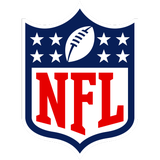
Get more from National Football League Follow your favorites to get information about games, news and more


